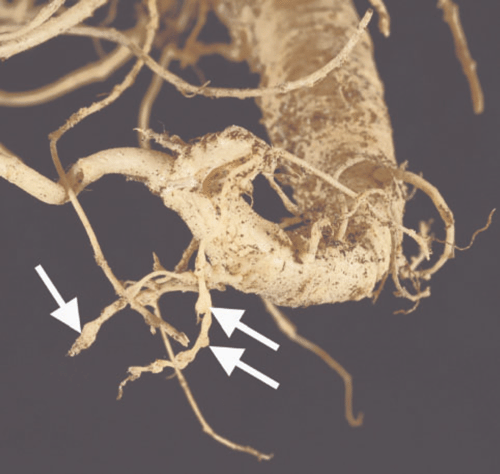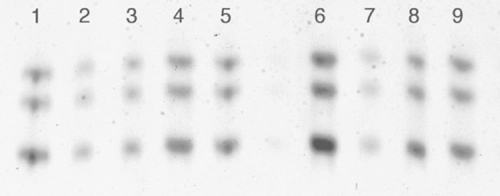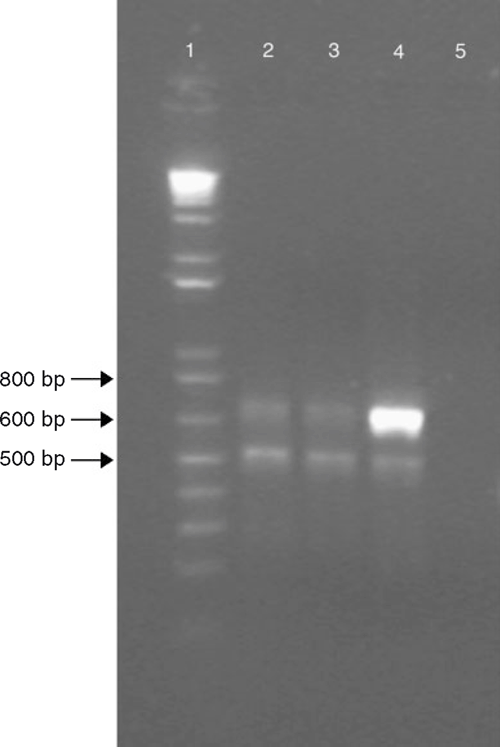First record of infection of Papaya trees with root-knot nematode (Meloidogyne javanica) in Australia
Modika R. Perera A B C , Ruben D. Flores-Vargas B and Michael G. K. Jones A BA Plant Biotechnology Research Group, WA State Agricultural Biotechnology Centre, Murdoch University, Perth, WA 6150, Australia.
B School of Biological Sciences and Biotechnology, Murdoch University, Perth, WA 6150, Australia.
C Corresponding author. Email: mperera@murdoch.edu.au
Australasian Plant Disease Notes 3(1) 87-88 https://doi.org/10.1071/DN08035
Submitted: 28 May 2008 Accepted: 3 July 2008 Published: 18 July 2008
Abstract
The root-knot nematode Meloidogyne javanica was identified in papaya roots in Western Australia. Species identification was based on esterase isoenzyme patterns and PCR diagnostics.
The papaya, Carica papaya, is widely grown as a fruit crop in the subtropical and tropical regions of the world (Luk et al. 2005). In Australia, papaya is widely distributed in coastal subtropical and tropical regions of Queensland, northern New South Wales, Northern Territory and Western Australia, in plantations and in household gardens. Queensland produces more than 95% of the commercial papayas in Australia (Botella 1999). Papaya trees are susceptible to diseases such as damping-off and root rot, ripe fruit rot, powdery mildew, phytoplasma-associated diseases, papaya ringspot potyvirus and various insect pests (Morton 1987). Of the several nematodes reported to be associated with papaya, only two genera appear to be economically significant in papaya cultivation. They are root-knot nematode (Meloidogyne spp.) and the reniform nematode (Rotylenchulus spp.), both of which have a worldwide distribution in papaya plantations (Luk et al. 2005). Heavy root-knot nematode infestations of papaya primarily by M. javanica and M. incognita have been reported from many countries (McSorley 1981). However, there is no record of nematode infection in Australia in papaya trees, apart from some anecdotal evidence (M. G. K. Jones, pers. comm.). Papaya plants in a household property in Perth, Western Australia, close to Murdoch University, showed above-ground symptoms of leaf chlorosis, plant stunting and poor growth. The roots showed typical symptoms of infection by root-knot nematodes (Fig. 1). Infected roots showed varying degrees of galling and the presence of adult female root-knot nematodes and egg masses. Two samples consisting of 15–20 single females and egg masses were dissected from the galls and esterase isoenzymes present in female nematodes were analysed by native polyacrylamide gel electrophoresis (Ibrahim and Perry 1993) using a PhastSystem with Precast Gels (Amersham Biosciences) and egg masses were tested using PCR diagnostic tests based on MtDNA (Stanton et al. 1997). Esterase patterns confirmed the presence of M. javanica (Fig. 2). PCR diagnostic tests based on MtDNA on egg masses amplified typical fragments expected for M. javanica (Fig. 3).

|

|

|
The results confirm that M. javanica was present in roots of the papaya trees and the observed symptoms, both above-ground and root galling, were typical of symptoms associated with root-knot nematode infection. Since papaya trees are susceptible to root-knot nematodes, where papaya trees are grown in plantations, management practices should be followed that minimise or control root-knot nematode infection.
Ibrahim SK, Perry RN
(1993) Use of esterase patterns of females and galled roots for the identification of species of Meloidogyne. Fundamental and Applied Nematology 16, 187–191.

Stanton JM,
Hugll A, Moritz C
(1997) Nucleotide polymorphisms and an improved PCR-based mtDNA diagnostic for parthenogenetic root-knot nematodes (Meloidogyne spp.). Fundamental and Applied Nematology 20, 261–268.



